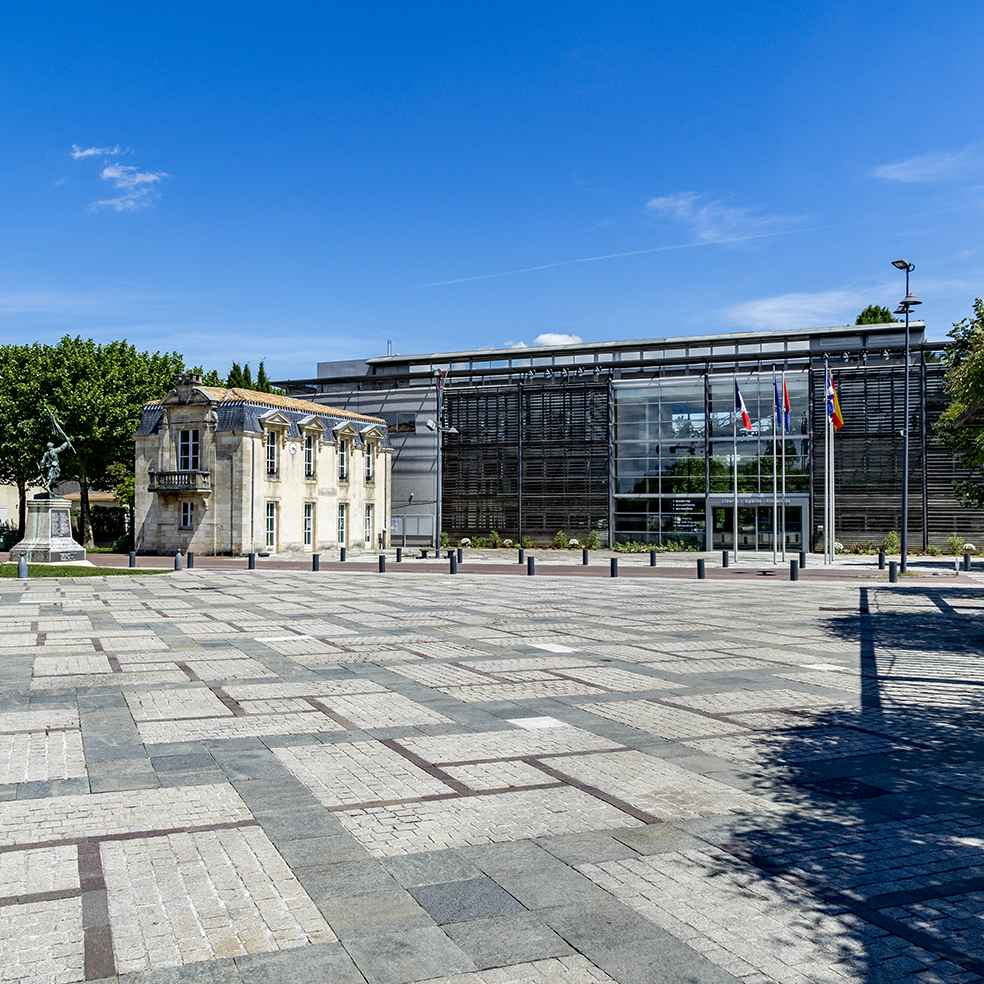
Bruges
Living in Bruges
Histoiry of Bruges
Marsh area until the 16th century, Bruges developed north of the center of Bordeaux, on the axis which connected from south to north the fountain of Audège and the Gallo-Roman aqueduct which conveyed the waters towards Bordeaux. Located on the road to Compostela, the territory of Bruges already housed in the Middle Ages a hermitage to accommodate pilgrims on the road to Tours. It was Henri IV who began to dry the marsh area by building dikes that keep the floods of the Garonne. Water drainage works continued until the reign of Louis XIII in the middle of the 17th century. The drying up of the marshes allows the city of Bordeaux to extend to the north, and Bruges to develop an economy based on viticulture. The arrival in France around 1860 of the insect pest Phylloxera will end the wine-making destiny of Bruges. Market gardening and horticulture will gradually replace the vineyards victims of the phylloxérique crisis until Bruges, throughout the 20th century, the pantry of the Bordeaux conurbation. The urbanization of Bruges was particularly important during the second half of the 20th century, with the creation of the large artificial lake straddling the territory of Bruges and Bordeaux.
Bruges essentials
Bruges has a remarkable built heritage, including several listed buildings: the Saint-Pierre church of the 13th century, Treulon Castle and its park, properties of the city since 1979 and whose former cellars are home to schools of music and arts from the scene, the castle of Borges, or the chapels Sainte-Germaine and Sainte-Marie. In terms of nature, the national nature reserve of the Bruges marshes covers 270 hectares. It is what remains of the great marshes of Bordeaux since the operations of draining the left bank, and is home to a wide variety of birds. Part of the reserve is designed for the public with marked trails and biodiversity observatories. The creation of the artificial lake straddling Bordeaux and Bruges was carried out in the 1960s, in order to provide a solution to the repeated floods during floods of the Garonne. The district of Tasta, former market garden now crossed by canals, has developed and urbanized on the shores of the lake.
Living Bruges
Only 5 km from the hyper-center of Bordeaux, on the banks of the great Lake Bordeaux, Bruges offers a quality of life sought. A dynamic city, both family and cultural, Bruges offers a wide range of activities through numerous sports facilities and leisure facilities, modern cultural facilities, a rich historical heritage and a privileged natural environment. Access to Bruges from the city center of Bordeaux is easy, by the ring road or by public transport thanks to the tram, bus and TER network. The relay car park Gare de Bruges is ideal to move then in the metropolis without constraint. Families in Bruges have 4 collective crèches, 7 nursery and primary schools, 2 colleges, 2 high schools and 2 vocational schools. Three sites are also dedicated to extracurricular care. The city of Bruges comes alive with markets twice a week: that of the esplanade Charles-de-Gaulle every Saturday morning, and that of the Tasta district every Wednesday. The beating heart of the city, Treulon Castle Park is home to a cultural space that includes a large auditorium, as well as dance and music studios. Three sports complexes, cycle paths, a municipal swimming pool, outdoor fitness trails and a wide range of water sports on Lake Bordeaux make Bruges an undeniably sporting city.